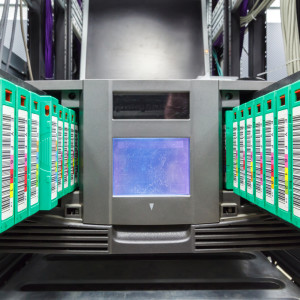 Disaster recovery is one of the most critical operations for today’s organizations, and when offered as DRaaS (disaster recovery as a service), it takes a provider that is up to a big task. As more cloud technologies emerge and as more data is stored in the cloud, the concept of DRaaS must also change to accommodate new data storage and lifecycle models.
Disaster recovery is one of the most critical operations for today’s organizations, and when offered as DRaaS (disaster recovery as a service), it takes a provider that is up to a big task. As more cloud technologies emerge and as more data is stored in the cloud, the concept of DRaaS must also change to accommodate new data storage and lifecycle models.
A New Era
There are at least three reasons that MSPs providing DRaaS need to shift away from the traditional approaches to disaster recovery and start thinking in terms of a new era of DRaaS.
1. Recovery is no longer a one-direction process.
- Disaster recovery isn’t just about cloud-to-on-premise recovery or even cloud-to-cloud recovery; it must be flexible and offer many options and directions.
- With the public, private, and hybrid cloud models, businesses are storing their critical data in an increasing number and variety of places. The recovery process needs to address this multidirectional and fluid data flow.
- Businesses need the ability to choose which data is backed up and where it is backed up. This means that providers need to offer cloud-to-multiple-cloud DRaaS options.
2. More advanced DRaaS options mean that MSPs can provide a higher level of service to their customers.
- The playing field is growing. An increasing number of companies are looking to third parties to provide services such as DRaaS, and solution providers need to differentiate themselves in the marketplace.
- MSPs also need to be able to have a disrupted environment operational in an increasingly shorter amount of time. The technology is faster and more advanced, so market SLAs are also higher.
3. Disaster recovery and managed availability services are converging.
- DRaaS historically has been marketed as a worst-case scenario tool. However, a well-designed and well-executed DRaaS model is more about how services are flexibly provided and always available.
- DRaaS and its technologies are still in their early phases, so there’s no better time for providers to demonstrate their sophistication in the world of complex data flows.
- Migration abilities are great examples of all-inclusive DRaaS models. The modern business needs a provider that can support both multi-OS environments (Linux, UNIX and Windows) and facilitate their seamless migration and replication for continuity purposes.
The growing complexity and evolution of IT environments means that the supporting services also must evolve and adapt to those models. Due to the multidirectional nature of recovery, the higher SLA expectations in the marketplace, and the convergence of disaster recovery and managed availability, both business consumers and MSPs need to reconsider how they think about DRaaS.
The stakes are higher, and the data models are more sophisticated, so businesses and MSPs need more expert assistance than ever.
To access expert advice about navigating the increasingly complex world of disaster recovery as a service, contact eXemplify today.